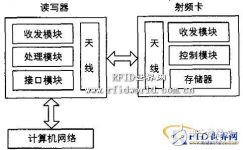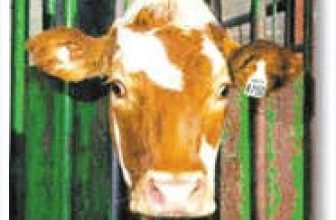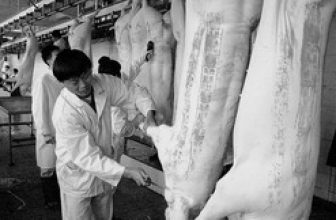
Research on Design and Application of Animal Tracking Management System Based on RFID
[ad_1]
At present, people’s demand for meat and dairy products is increasing. At the same time, people are paying more and more attention to the reliability of the quality of these products. This poses a new challenge for some companies, requiring them to have a complete The management system strictly supervises and controls the production and processing of these products. However, in the past decade or so, animal epidemics around the world have continued to erupt, such as mad cow disease, streptococcus suis, foot-and-mouth disease, avian flu, etc., which have brought serious threats to people’s health and lives, and have also dealt a heavy blow to animal husbandry around the world. Industry, which has attracted great attention from countries all over the world. For this reason, governments of various countries have quickly formulated corresponding policies and adopted various measures to strengthen the monitoring and management of animals. Among them, the identification and tracking of animals has become one of these major measures. For example, the British government stipulates that various tracking and identification methods must be adopted for breeding animals such as pigs, horses, cattle, sheep and goats.
The purpose of this system research is to apply RFID (Radio Frequency IdenTIficaTIon) technology to establish a complete, flexible and convenient management system to improve the modern management level of the pig farm; at the same time, it is convenient for the management staff to quickly Find out the source of the disease and deal with it accordingly to avoid the expansion of losses. RFID is a non-contact automatic identification technology, which has the characteristics of large data storage capacity, readable and writable, strong penetrating power, long reading and writing distance, fast reading speed, long service life, and good environmental adaptability. And it is the only automatic recognition technology that can realize multi-target recognition.
1 System structure and working principle
The RFID-based animal identification and tracking management system consists of three parts: RFID radio frequency card, reader and computer network, as shown in Figure 1. The reader is generally used as a computer terminal to read, write and store data on the RFID radio frequency card. It is composed of a control unit, a high-frequency communication module and an antenna. The readers in this system include fixed and hand-held two types. RFID card is a passive transponder, which is mainly composed of an integrated circuit (1C) chip and its external antenna. RFID chip usually integrates radio frequency front-end, logic control, memory and other circuits, and some even integrate antennas together. On the same chip.

Figure 1 RFID-based animal identification system structure
The basic working principle of this system is: when the pig with “ear studs” (RFID card) enters the radio frequency field of the reader, the induced current obtained by its antenna is boosted by the booster circuit and used as the power supply of the chip. The induced current with information is sent to the logic control circuit for information processing through the digital signal detected by the radio frequency front-end circuit; the information that needs to be replied is obtained from the memory and sent back to the radio frequency front-end circuit through the logic control circuit, and finally sent back to the reader through the antenna Writer.
The computer network obtains the information of pigs in the farm through the interface, and integrates the basic functions required for the daily management of the pig farm, and integrates all the various records, statistics, reports and other tasks that were originally completed manually in the daily management of the pig farm. Realize computer management. The system basically meets the current production management needs of the pig farm, and provides information from the macro decision-making, which is convenient for managers to understand the management status of the pig farm in a timely and accurate manner, and improves the modern management level.
2 System hardware design
The realization of the hardware circuit in this system includes three parts: the installation of pig “ear nails” (RFID card), the realization of the tag reader and writer, and the construction of the computer network.
2.1 Installation of “Earrings” (RFID Card)
At present, the basic methods for installing electronic tags on animals include collar type, ear tag (nail) type, injection type and pill type electronic tags. Each type of tag has its own characteristics and scope of application. The cost of the collar type tag is too high, and the injection type tag and the pill type tag are not suitable for animals such as pigs, so the “earring” type electronic tag is used in this system. The earring type electronic tag not only stores a lot of data, but also resists dirt and rain. The information stored in the “earring” type radio frequency card includes: address, postal code, breed information, ear stud wearing date, quarantine and immunization information, disease information, genealogy and reproduction information, release date, etc. This information must cover the entire life cycle of the pig from birth to facilitate identification, tracking and management of the pig.
2.2 Implementation of RFID tag reader
There are two types of RFID tag readers used in this system: one is a fixed reader; the other is a handheld reader, as shown in Figure 2. The main difference between a fixed reader and a handheld reader is: the handheld reader can read a large amount of RFID tag information, and then the information can be input to the software platform of the system through the USB interface or COM port of the PC. middle. After the fixed reader/writer reads the RFID tag information, it is transmitted to the software platform in real time, instead of storing it in the reader. The fixed reader is installed in a fixed position of the pig house, and can exchange data and information in real time through the CAN bus network and the software platform. The handheld reader is very convenient to use. After reading the RFID tag information, data exchange with the PC machine is carried out. Due to space limitations, only the principle block diagram of the fixed reader is given in this article, as shown in Figure 3. The functions of each module are as follows:

Figure 2 System network structure diagram
[ad_2]





